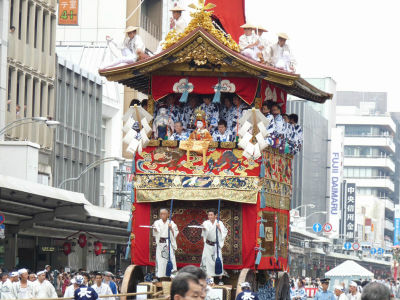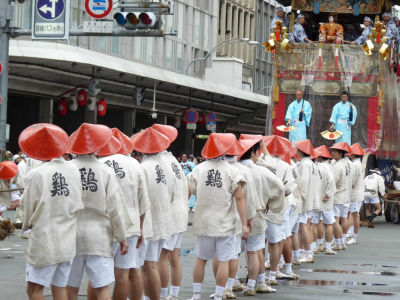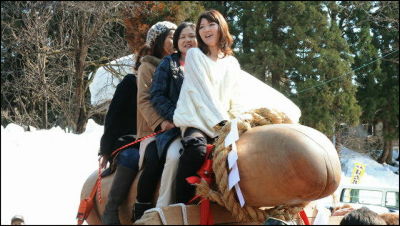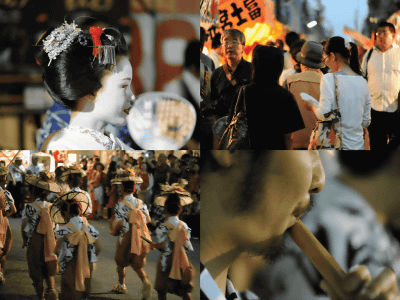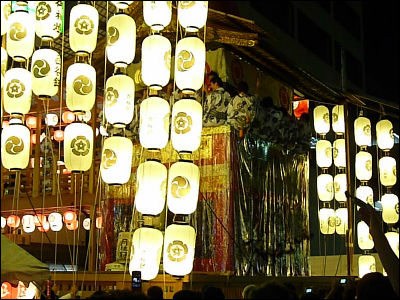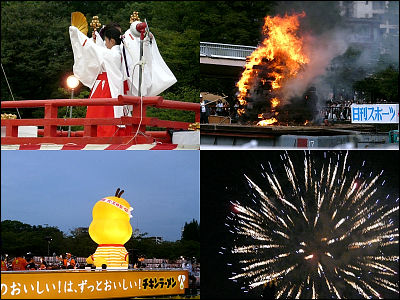Pictures of All 32 Yamaboko Floats on the Parade of Kyoto's Gion Matsuri - Part. 3/3

Here's the third and the last part of our coverage on the grand parade "Yamaboko Junko" of Kyoto's Gion Matsuri. Following the first and second part, this post will cover from Houka-hoko to Minamikannon-Yama.
Pics after the cut!
Shijo Kawaramachi was seriously crowded. Policemen were sitting down not to block people's view.
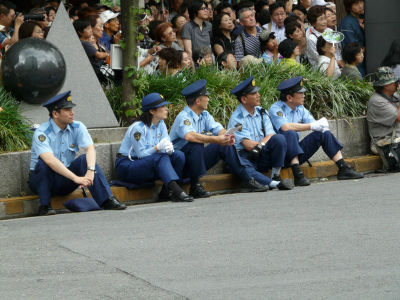
The 21st float Houka-hoko came in view.
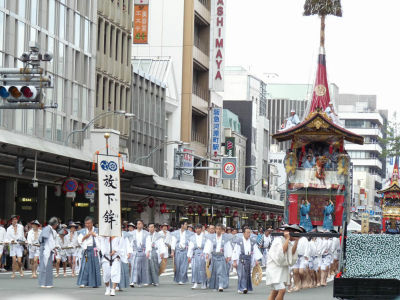
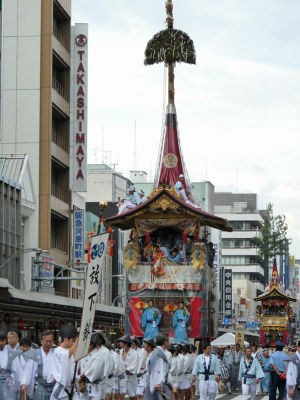
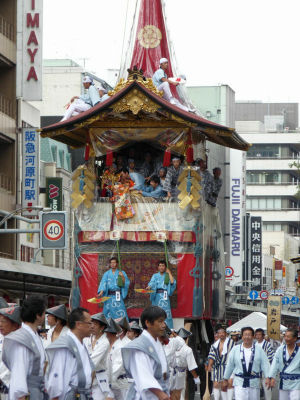
A real Chigo(sacred child) used to ride this float, but since 1929 it carries a Chigo doll instead.

Oops! The Chigo doll almost fell off!
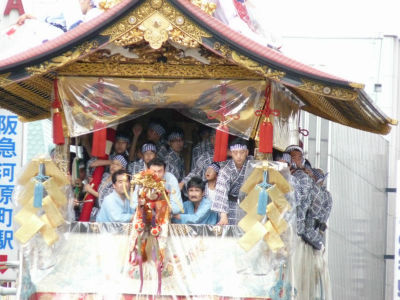

Actually, it didn't. The puppeteers are making the doll perform "Chigo-mai(Chigo dance)".
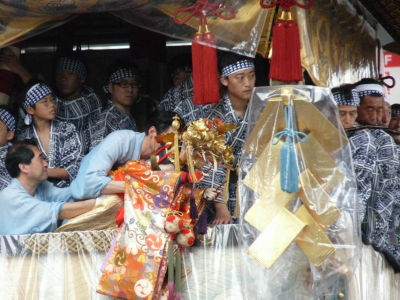

The doll is named Sanko-maru (sanko meaning "three lights").
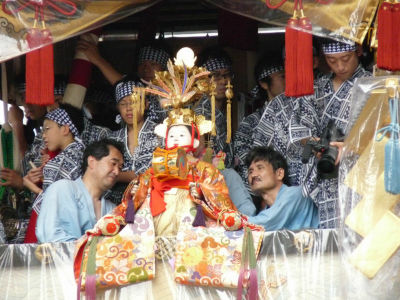
People on the roof are usually the ones who built the upper part of the float. They're watching out for obstacles like electric wires.
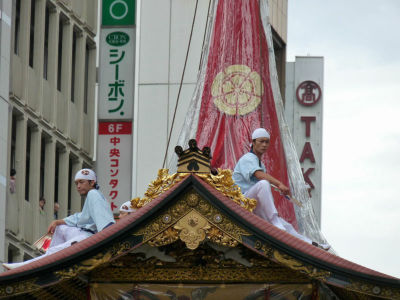
Turning at the intersection.
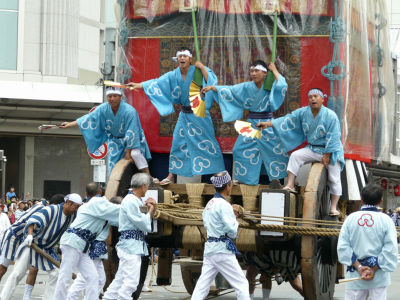
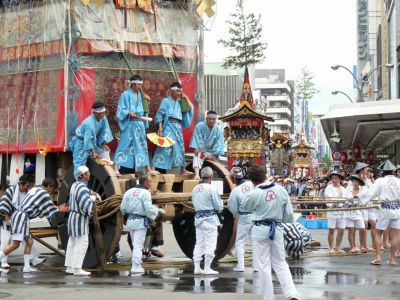
Iwato-yama came next.

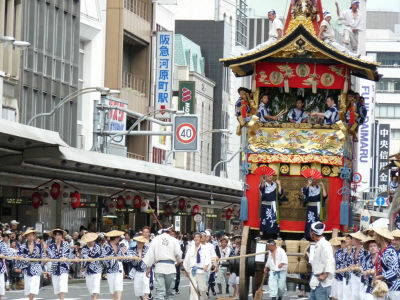
No Chigo or Chigo doll on this float.

Named after Amano-Iwato.
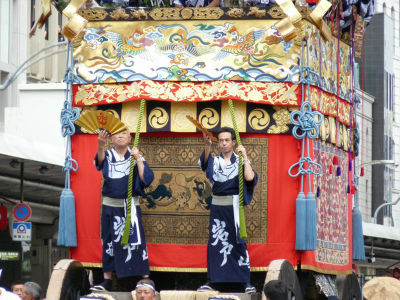
The doll on the roof represents Izanagi. There are also dolls of Amaterasu and Tajikarao(another Japanese God) inside the float.
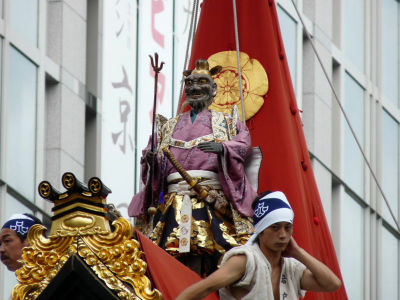
This float was drawn by a mixed-race team.
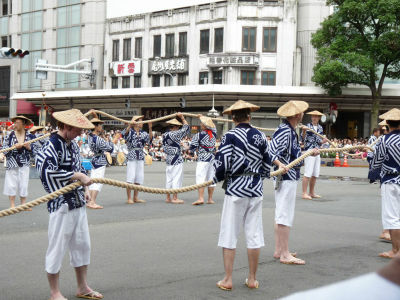

Many non-Japanese were seen here.
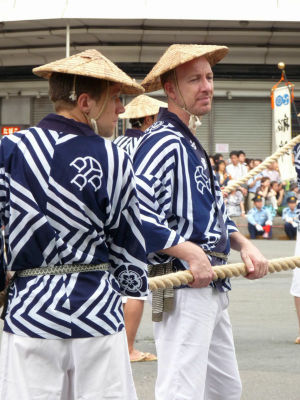
Turning left at the intersection. Maneuvering the larger floats require elaborate process called "Tsuji-Mawashi".

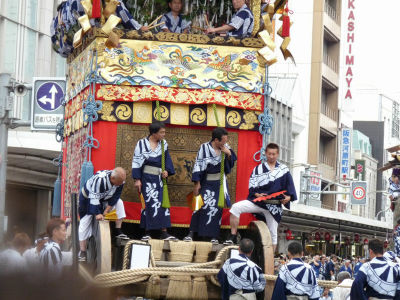
You can see more floats coming down Shijo Street.
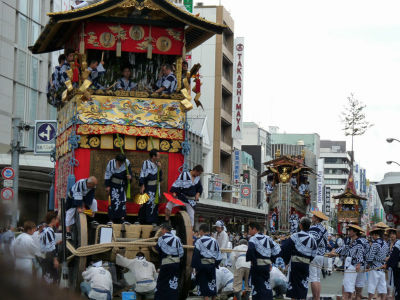
On the roof.
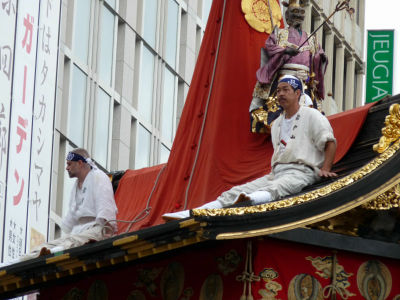
Not the best place for acrophobes.
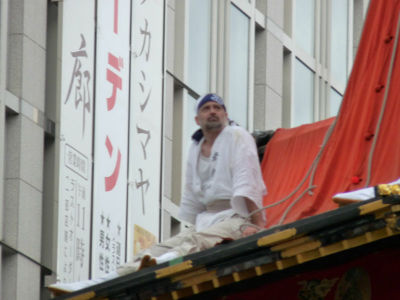
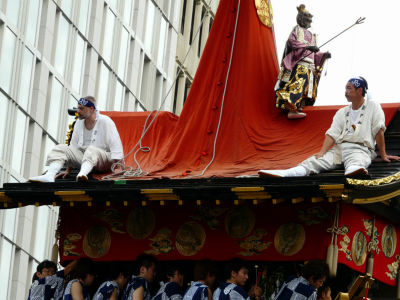
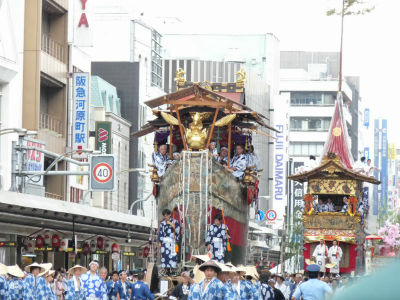
"Fune" mans "ship".

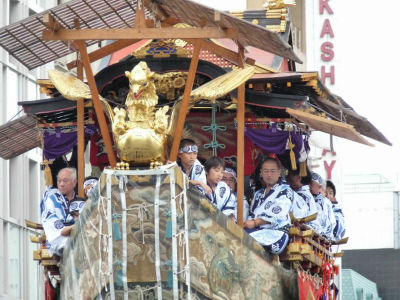
The figurehead looks like phoenix.

Tsuji-Mawashi.
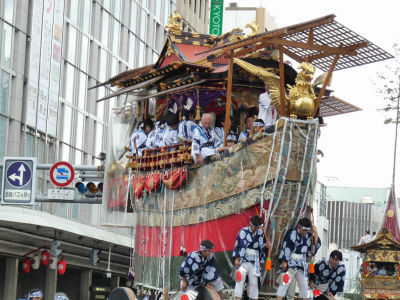
This float also used bamboo and water.
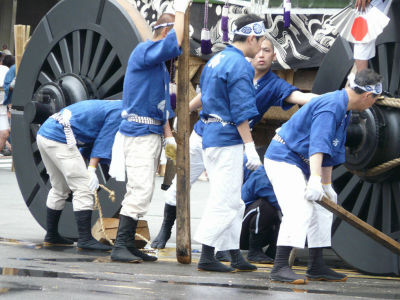
Turning.
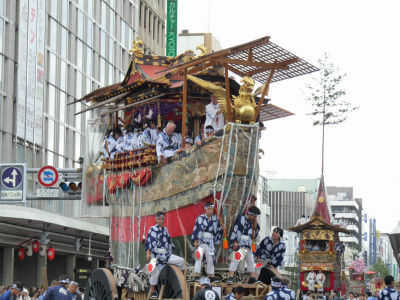
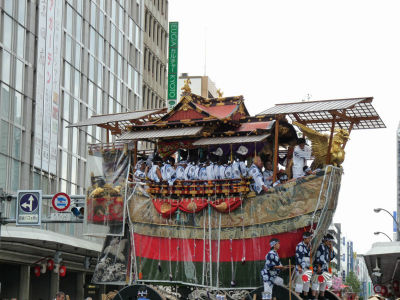

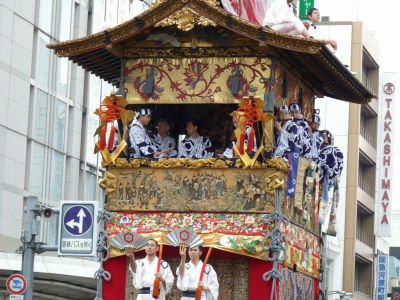
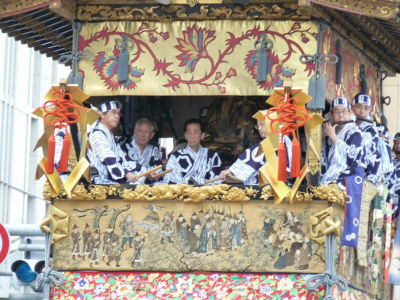
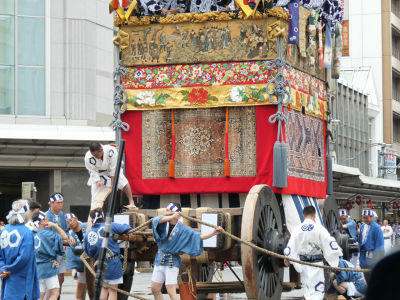
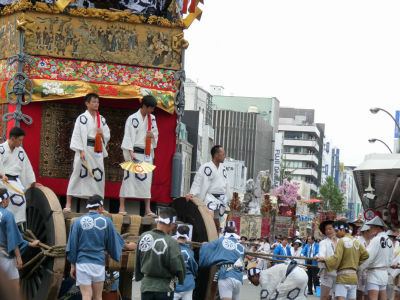

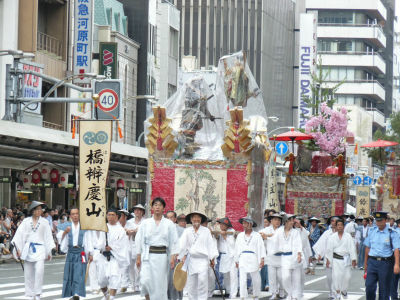
Wrapped in plastic it's hard to tell what's going on, but it depicts a scene from a very famous story in Japanese history, the duel between Ushiwakamaru and Benkei which is said to have taken place on Gojo Bridge in central Kyoto, around 1170 or so.
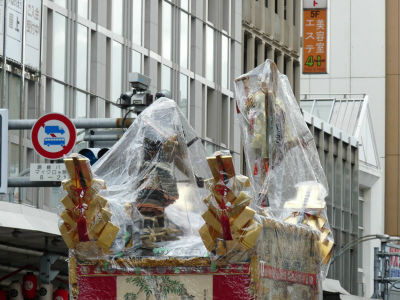
Ushiwakamaru.
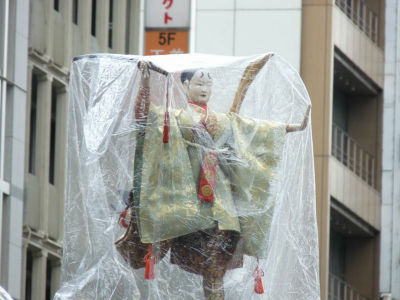
Benkei.
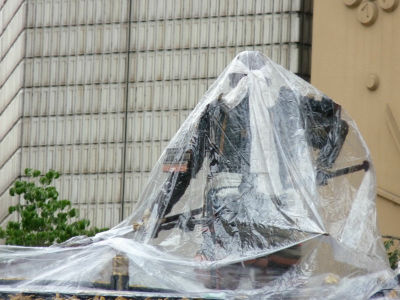

It represents poet Otomo Kuronushi gazing at cherry blossoms.
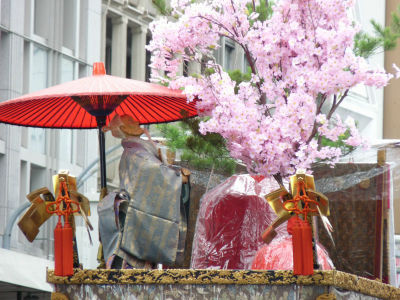
Many children were participating in the parade.

The marchers are mostly local people from central merchant district of Kyoto. When these kids grow up they'll probably draw the float or participate as hayashi musicians.
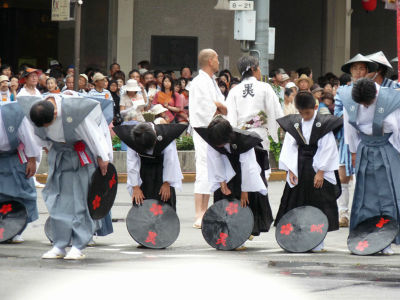
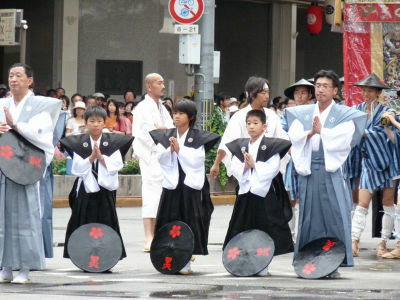
This float must be lightweight for they lifted it up and turned around and around at the crossing.
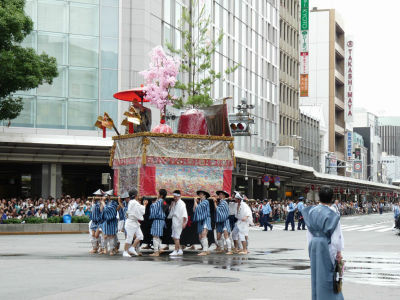
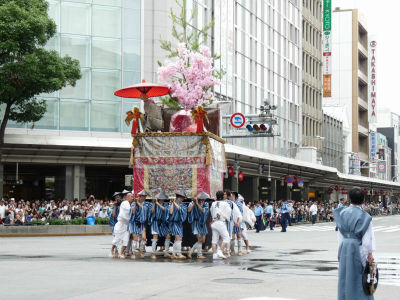
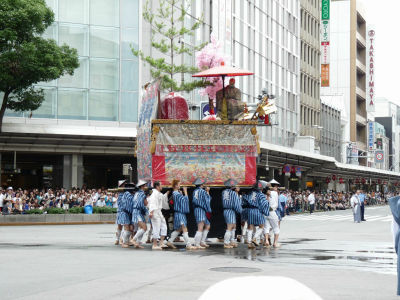
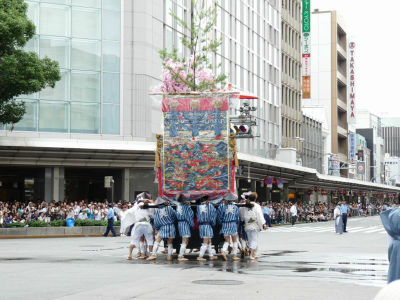
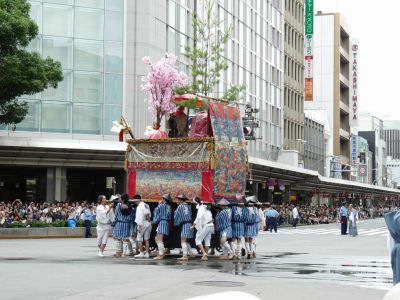
Draped in gorgeous tapestries.
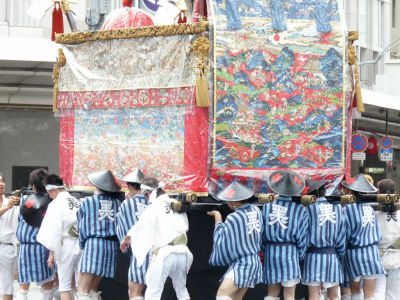
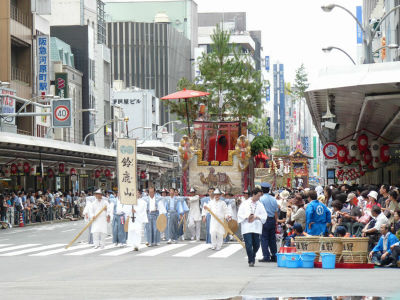
The picture on front looks like camels.
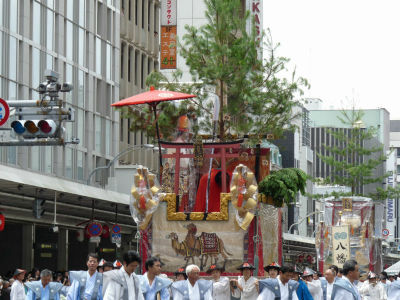
It features the Goddess of Suzukayama.
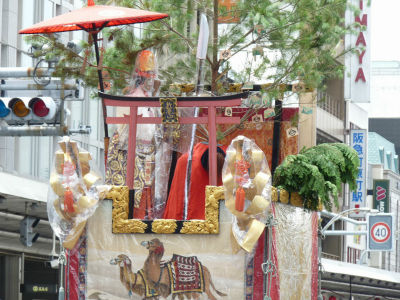
Unlike the usual Happi, these white costumes are buttoned, creating a somewhat Middle-Eastern feeling combined with the camels.
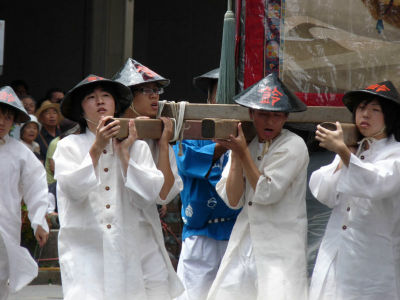
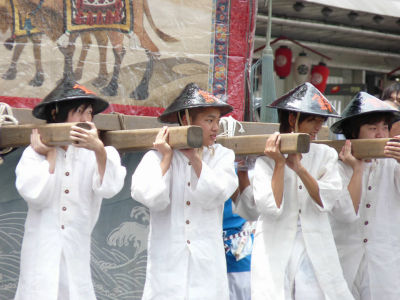
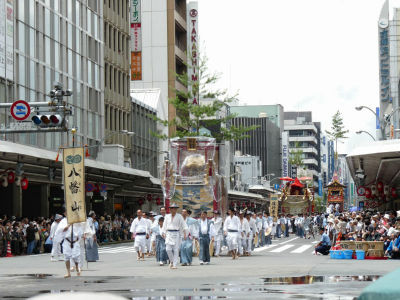
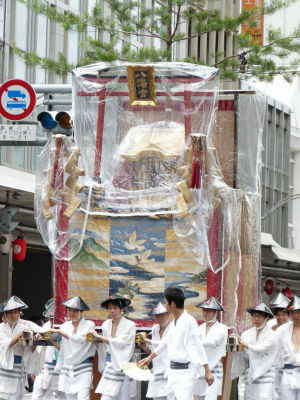
A miniature Hachiman Shrine.
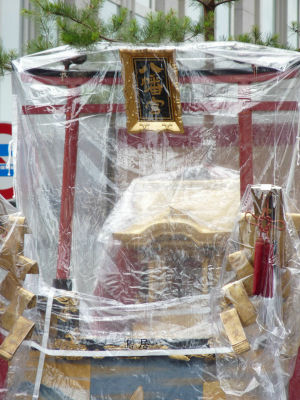
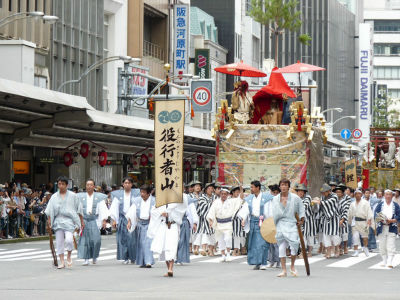
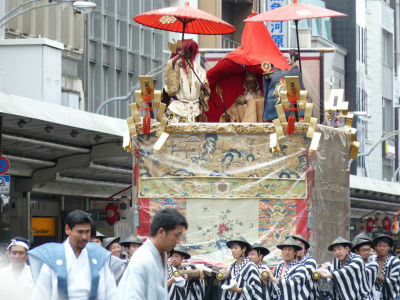
The doll represents En no Gyoja.

This striped happi coat might not look out of place in The Specials' concert.
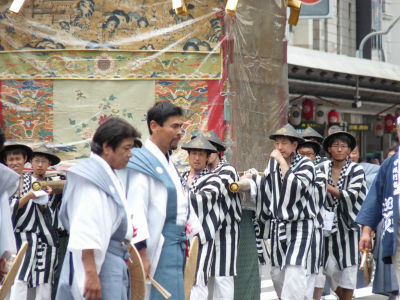
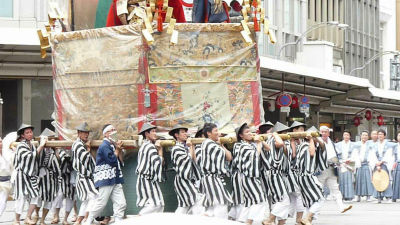
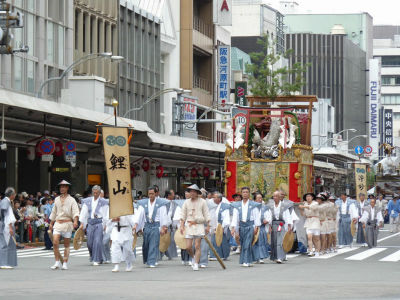
It carries a vividly curbed wooden wooden koi.

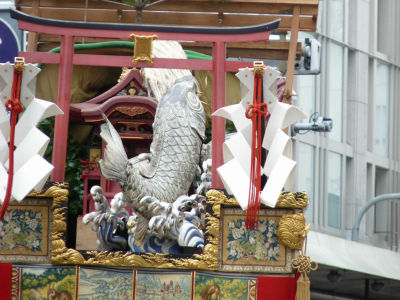
Side.
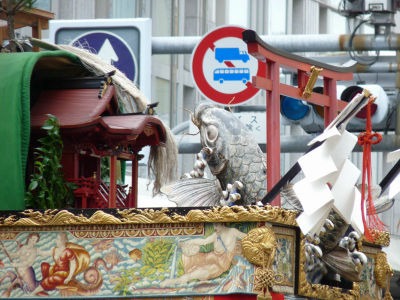
The 16th century Belgian-woven tapestries depicts scenes of Trojan War from Homer.
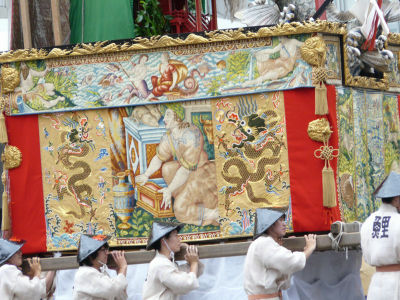

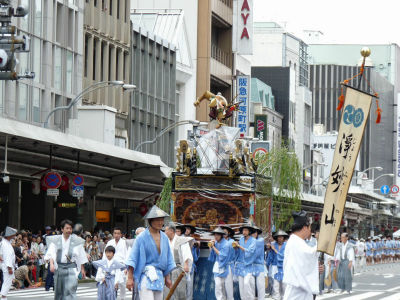
Depicts a scene from Battle of Uji(1184).
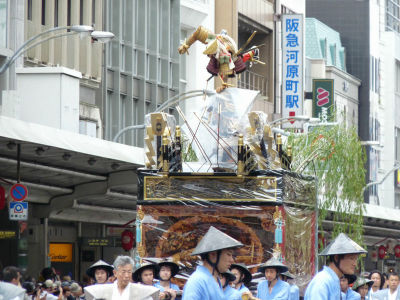
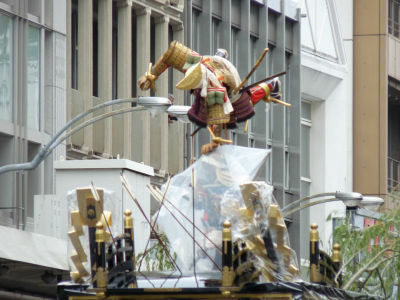
Lion.
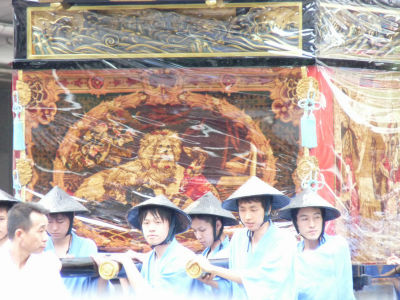
Pyramid and camel.
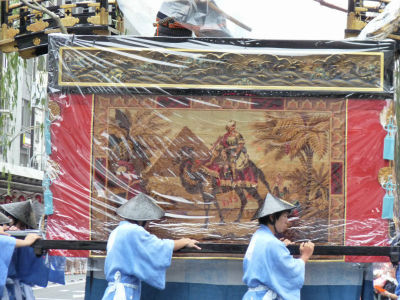
Quite the acrobat.
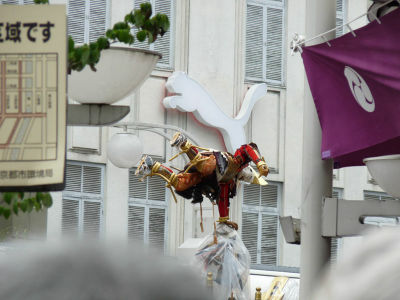
Minamikannon-yama came in view.

Some Yama floats are as large as Hoko floats, but you can tell a Yama by the pine tree.
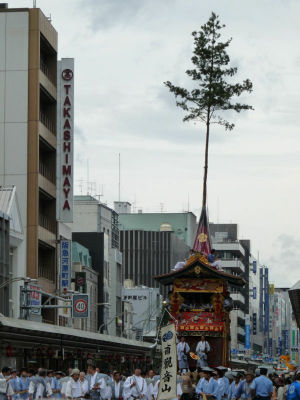
Playing drum and flute.
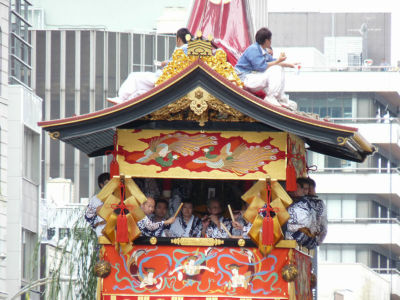
Tapestry of Fenghuang.
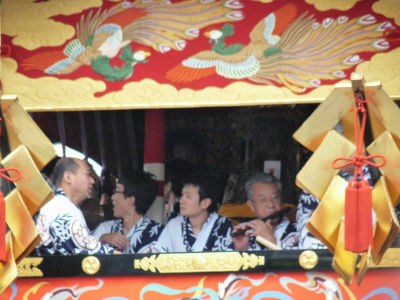
Three Tennyos draped over what looks like a Persian rug.
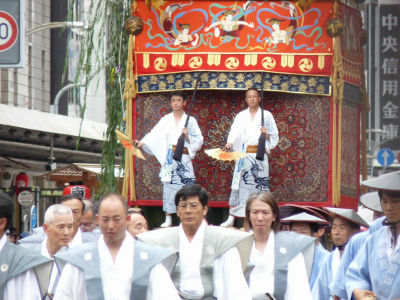
Turning.
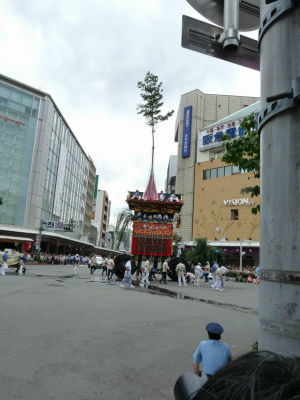
Qilins on the side.

Lounging on the roof. This year the cloudy weather made it easy on them, but they must be exposed to a high risk of dehydration on sunny years.
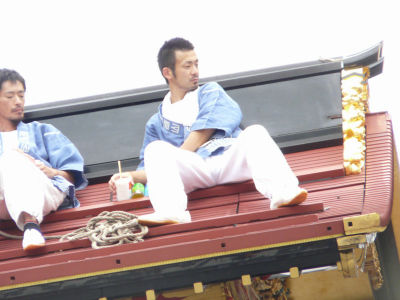
Tail end of the procession, followed by a police car.
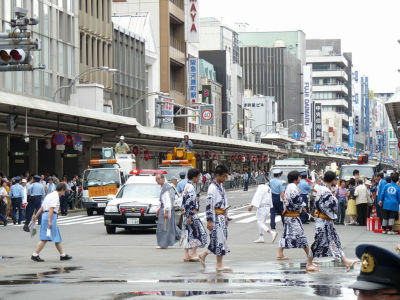
The party's over.
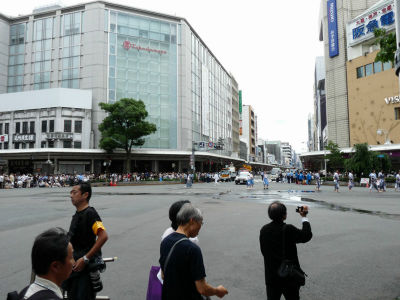
Related Posts:
in Coverage, Posted by darkhorse_log

